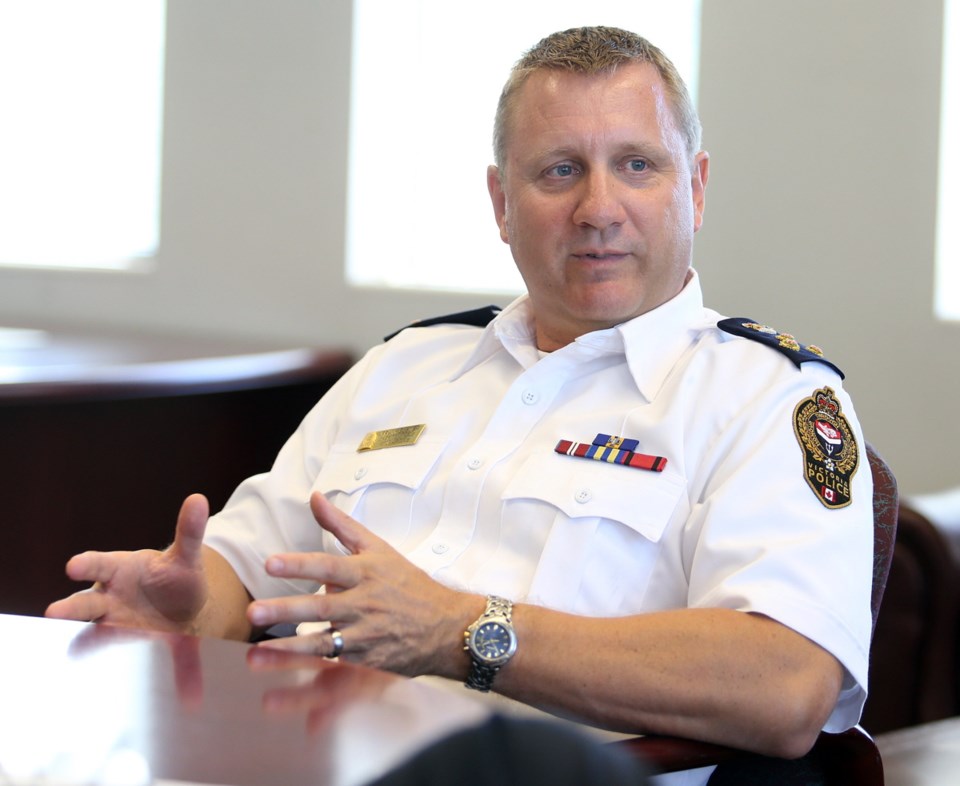As crime rates continue to decline, Greater Victoria taxpayers are maintaining overstaffed police forces, says a study by the Fraser Institute, a right wing think-tank.
“Municipal governments, in particular, have long argued that they don’t have the resources necessary to do what is asked of them. This is really a first step in making sure that cities . . . are utilizing resources in the appropriate manner,” said Fraser Institute president Niels Veldhuis. “On this one important aspect of what municipalities do, the question is, is Victoria making efficient use of its dollars? One way to evaluate that is whether it has the appropriate number of officers.”
Victoria Police Chief Frank Elsner called the report “simplistic” and “unsophisticated.” It takes a narrow view of law enforcement, failing to account for the work police do around issues such as mental health, homelessness and addiction. “They’ve used really low benchmarks and didn’t even get those right,” Elsner said.
The study, Police and Crime Rates in Canada, analyzed policing levels, local crime rates and socio-economic factors such as median family income, unemployment and youth populations using Statistics Canada data over a 10-year period to calculate the optimal number of police officers in Canada's metropolitan areas.
The study found that government spending on policing grew over the last decade as crime rates fell. For example, between 1986 and 2012, policing costs (per person in Canada) rose by 45.5 per cent while Criminal Code incidents per officer dropped by 36.8 per cent.
The study says the most overstaffed police forces in Canada are Saint John, Winnipeg and Windsor. Greater Victoria, which includes all police forces in the capital region, ranked 10th.
While more police can lead to lower crime rates, at some point, increased spending on additional police officers has little impact on crime reduction, say the study’s authors.
Elsner said the report’s use of regional statistics is next to meaningless. “It really tells us nothing. It tells us that within the region itself, based on their analysis, that there’s too many officers. What it doesn’t do is look at why that is. Just on the face of it because there’s four police departments plus all the RCMP and all their detachments, there’s going to be a lot more administrative infrastructure than there would be with one [department].”
Elsner noted the report also fails to address the core city syndrome which makes Victoria, as the seat of government, the site of protests, the daytime working centre, home to social services and the region’s nighttime playground.
“The other thing is, we’ve done the stats right across Canada, 25 to 30 per cent of what we do is actual law enforcement. So that ties directly into crime stats. But the rest of it, 75 or 80 per cent of what we do is all about the social side of the house — mental health, homelessness, addiction issues — all those things. That’s what takes up the vast majority of our resources,” Elsner said.
Saanich Mayor Frank Leonard said he would be hard pressed to justify any decrease in his municipality’s police numbers. “Certainly, it isn’t the impression of the Saanich police board that we’re overstaffed,”
Veldhuis acknowledges that with issues surrounding mental health and addictions, policing is complex but says crime rates are a valid measure of staffing requirements.
“This is one aspect and, for most people, the most important aspect is to keep our cities safe. So I believe the crime rate is one of the most important metrics and I think most people would agree with that,” he said.
Esquimalt Mayor Barb Desjardins said that on a regional basis the numbers of police may be high.
“If we were a regional police force, we probably could do with fewer because of the efficiencies that that might create,” Desjardins said.
Victoria Coun. Ben Isitt said the report represented “one of the very few findings” where he agreed with the Fraser Institute.
“I’ve been advocating for restraint in the police budget for several year,s while advocating that we respect the language of the collective agreements and the rights of existing police officers,” Isitt said.
Oak Bay Mayor Nils Jensen said his municipality’s 27 uniformed officers (four are seconded to regional units) give it the level of policing it wants. “We have one of the lowest per capita policing costs in British Columbia,” he said..



